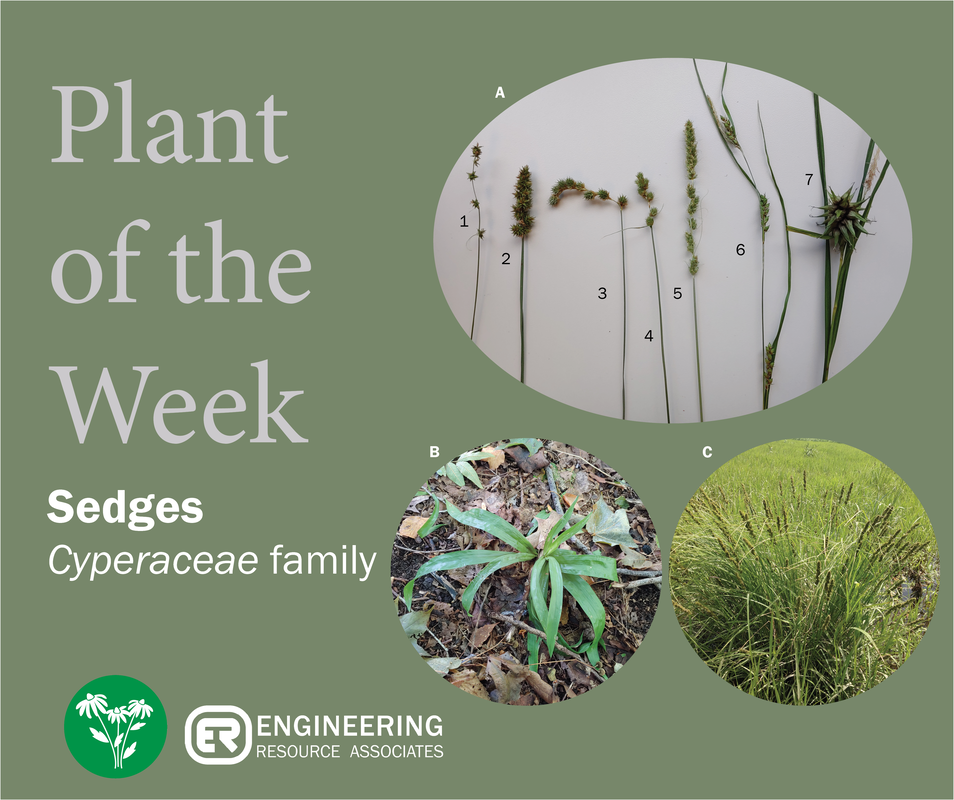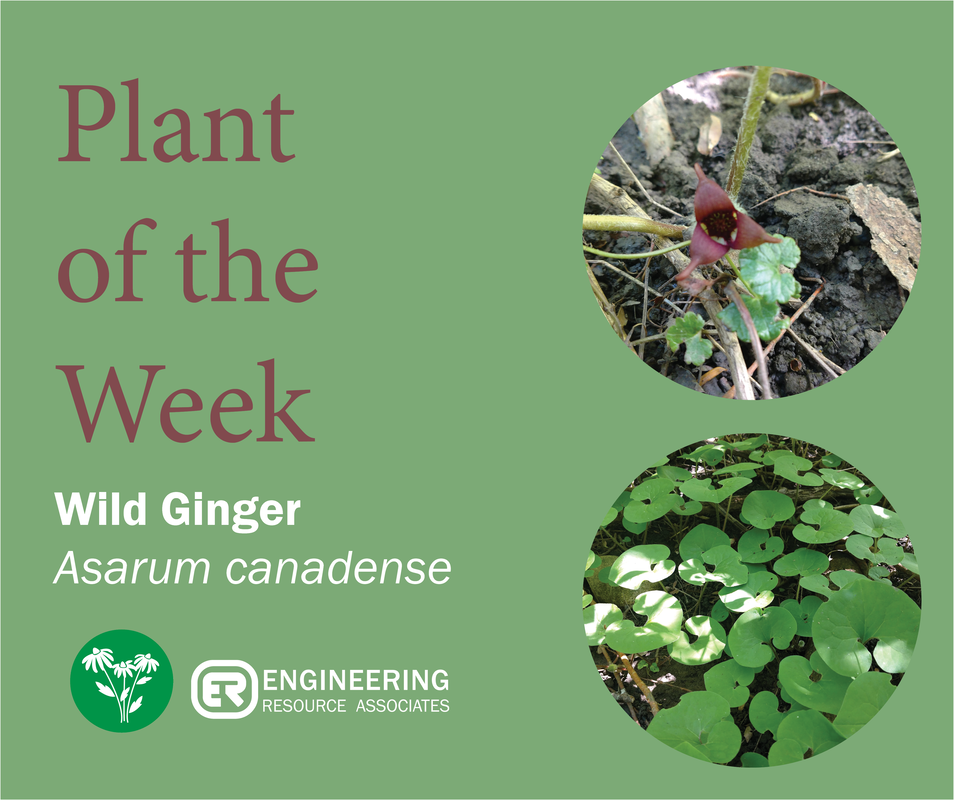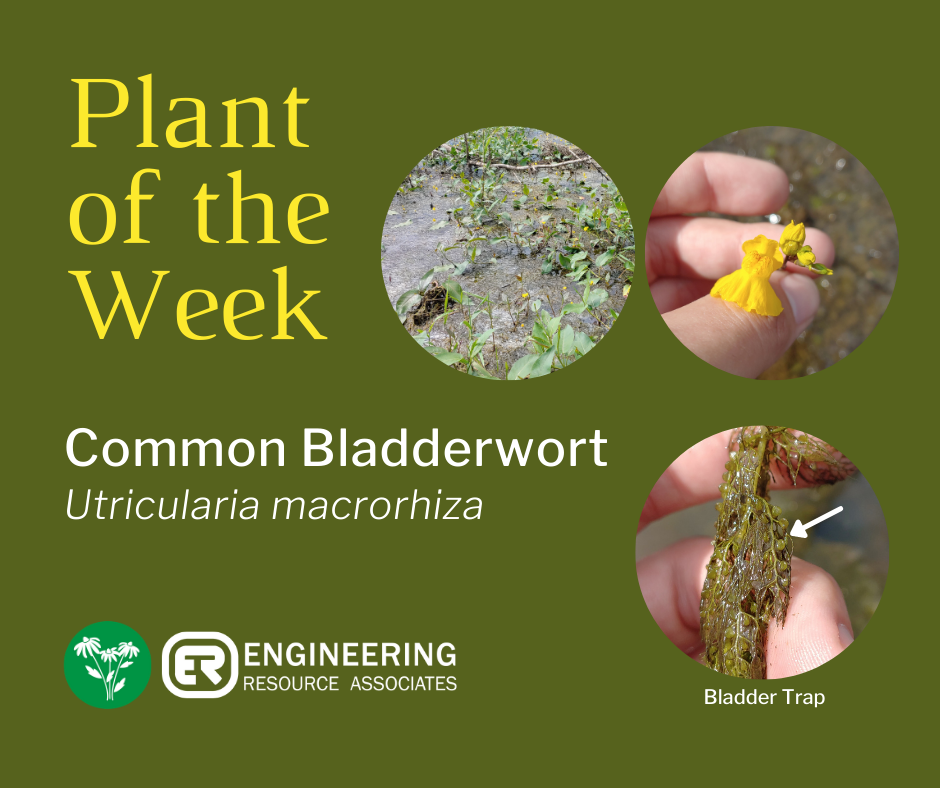Sedges are a grass-like plant in the family Cyperaceae. Split down into several genus below that, Carex is the most commonly found genus of Sedge in Illinois with over 2,000 known species around the world, and 193 species described in Robert Mohlenbrock’s Illustrated Flora of Illinois. Carex species are easily confused for grass, especially when the interesting seed heads are not present, but they can always be discerned by remembering the phrase “sedges have edges”. This is because all sedges, and some other genus in the Cyperaceae have triangular stems, though some or more pronounced than others. They usually grow in tufting clumps known as a ‘hummock’ and have favorability to wet areas such as stream banks and wooded wetlands but can also be found on dry sand and hill prairies.
Beneficial to local wildlife in many ways, Carex species provide forage food for animals and insects grazing on foliage, waterfowl seeking out seeds and seed heads, serve as host species for several caterpillars and other insects, and create nesting areas for small songbirds and mammals.
Most importantly, sedges can be used in home landscaping with few issues as no known Carex species are invasive. The varied size, shape, colors, attractive inflorescence, and tolerance for varied soil and moisture can be an asset to any home landscape. While many horticultural varieties exist, primarily from Asia, it is best to seek out native varieties that local wildlife can recognize and benefit from.
Included below are a variety of collected seed heads all found within one small woodland garden, and two species identified in varied habitats. The variety of shape and texture can create visual interest year-round as the plants mature, flower, and change color in the fall.
Pictured species are as follows:
Photo A:
- Carex rosea (Rosy Sedge)
- Carex stipata (Prickly Sedge)
- Carex projecta (Necklace Sedge)
- Carex normalis (Greater Straw Sedge)
- Carex vulpinoidea (Foxtail Sedge)
- Carex davisii (Davis’ Sedge)
- Carex grayi (Gray’s Sedge)
Photo C: Carex vulpinoidea (Foxtail Sedge) in a flooded wetland






 RSS Feed
RSS Feed